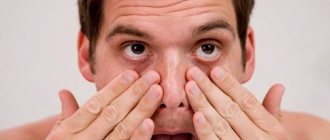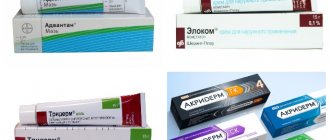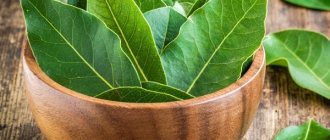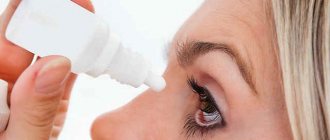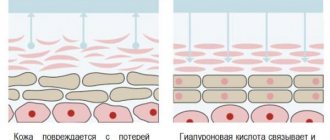The article was prepared by a specialist for informational purposes only. We urge you not to self-medicate. When the first symptoms appear, consult a doctor.
In the modern industrialized world, even the body of adults does not always cope with the attack of numerous allergens, what can we say about children? In each child’s personal medical record, on the first page there is a column for information about allergies, and few people have it empty.
Every day children face adverse environmental factors:
- Industrial emissions in the atmosphere;
- Clothing made from artificial fibers, dyed with harmful dyes;
- Food full of chemical additives - preservatives, leavening agents, emulsifiers and others;
- Vegetables, fruits and meat products, the production and cultivation of which involved antibiotics and pesticides;
- Personal hygiene products, cosmetics and household chemicals, the composition of which is far from environmentally friendly.
A child’s body cannot resist allergens for a long time, especially if there are many of them and the negative impact is long-lasting. The most common reaction is a skin reaction; it is hives or a rash that is the main symptom of allergies in children. If this happens, it is necessary to identify the allergen and eliminate it from the child’s daily routine, as well as temporarily adjust the diet so that spicy, irritating foods do not provoke new allergic reactions.
Sometimes difficulties arise in determining the exact cause of the disease: avoiding contact with dust, animal hair, pollen, citrus fruits and other known allergens has no effect. Then the child must be shown to an allergist, who will perform special skin tests and determine the “culprit” of the allergy.
The treatment of allergic skin rashes in children must be approached very carefully, because not all allergy creams and ointments are approved for use by children. As paradoxical as it may sound, sometimes even allergy medications cause allergies. In addition, there are ointments and creams that are generally contraindicated for children due to the active ingredients they contain.
Allergy creams and ointments are divided into two large groups:
- Hormonal;
- Non-hormonal.
Types of allergies in children
There are many types of allergic reactions, depending on the clinical picture and the group of substances that cause the pathology. The most common of them:
- respiratory (breathing) allergies;
- contact (skin) allergies;
- food allergies;
- insect allergy (reaction to contact with insects and their bites);
- drug allergies;
- infectious allergy;
Every year there are more and more children with allergic manifestations. Currently, the pathology is diagnosed in 25-30% of the population. If allergies are not treated, the child may experience serious complications: asthma, Quincke's edema, anaphylactic shock, loss of consciousness, etc.
Hormonal
Hormonal ointments are the most effective remedy for skin allergies, allowing you to almost instantly relieve itching and swelling.
POPULAR WITH READERS: Tavegil instructions for use, analogues, reviews
They are not widely used due to the possibility of affecting hormonal balance and internal organs.
If glucocorticosteroid cream is used incorrectly, a number of undesirable complications can occur.
Ointments with hormones are prescribed for severe itching, visible, increasing swelling, and severe hyperemia.
They are usually used in the first days until the symptoms of an allergic reaction decrease; further therapy is continued with an anti-inflammatory, moisturizing and skin-regenerating cream.
Allergy symptoms
The clinical picture of an allergic reaction directly depends on the type of pathology and the location of the pathological process.
Manifestations of skin allergies in a child include various types of rashes:
- redness of skin areas;
- the appearance of a rash;
- peeling of the skin;
- itching
This type of allergy is most common in infancy, but can persist into adulthood.
Manifestations of allergic rhinitis and hay fever:
- impaired nasal breathing, nasal congestion;
- watery nasal discharge;
- sneezing;
- itching in the nose area;
- lacrimation.
Manifestations of allergic conjunctivitis:
- swelling and redness of the eyelids;
- redness of the whites of the eyes;
- profuse lacrimation;
- a feeling of stinging in the eyes (or a feeling of “sand”);
- photophobia.
The principle of action of the ointment, indications for use
Children are prescribed products for external use against skin allergies if:
- peeling;
- severe dry skin;
- rash;
- intense itching.
These symptoms indicate that allergic dermatitis or urticaria is developing. Such pathological conditions are more common among children than eczema and psoriasis.
It must be remembered that ointment for allergic dermatitis will not solve the problem of exposure to third-party agents on the body that provoked the disease.
Such drugs only eliminate symptoms: they help relieve acute manifestations and alleviate the condition of chronic diseases.
To treat skin allergies, children are often prescribed external agents, as they act comprehensively:
- moisturize, eliminating severe dryness;
- reduce the intensity of manifestations of the inflammatory process, stop it;
- help relieve pain and reduce itching;
- help restore the color of the skin: remove redness and rashes.
If, along with the main drug therapy, anti-allergy ointment is not used for children, the disease will take longer to develop. During this period, the symptoms will cause a lot of discomfort. It must be remembered that young children do not have such a highly developed ability to control their actions, which means that itching remedies must be used. If this is not done, wounds will form on the skin due to severe itching. During exacerbations, the outer skin becomes dry, crusts form, and cracks appear in these places.
Acute allergic reactions in children
Parents also need to know the signs of serious conditions that occur as a result of allergies in a child: Quincke's edema, anaphylactic shock and bronchial asthma.
With Quincke's edema, swelling of the skin and mucous membranes suddenly develops. The most dangerous is swelling of the throat mucosa, which is manifested by difficulty breathing, hoarseness of the voice, a strong barking cough and clouding of consciousness (due to lack of oxygen). Anaphylactic shock can be identified by a drop in blood pressure, pale or bluish skin, bronchospasm, and loss of consciousness. Bronchial asthma is diagnosed based on the following symptoms: cough with difficult to separate sputum, whistling or wheezing when breathing, shortness of breath (predominantly exhalation is difficult), oxygen starvation of the body, attacks of suffocation.
Causes of allergies in children
The reason for the development of allergic reactions is the penetration of allergens (irritant substances) into the child's body. Substances can enter the body in three ways:
- Oral – when consuming food, various drinks.
- Respiratory - when inhaling an allergen in the air (for example, plant pollen).
- Contact – in direct contact with the allergen.
In childhood, allergies most often occur when the body comes into contact with pollen, animal hair, certain medications, insects, cleaning and detergent chemicals, as well as highly allergenic foods (whole cow's milk, eggs, nuts, chocolate, honey, etc. ).
Why exactly allergies develop is still unknown to scientists. However, there are factors that significantly increase the risk of this pathology:
- Hereditary factor.
- Exposure to frequent infectious diseases.
- Poor environmental conditions in the region of residence.
- The desire of parents to create “sterile conditions” for their child to live.
- Too early introduction of complementary foods, early refusal of the mother to breastfeed.
Diagnosis of allergies
If a child is suspected of having an allergy, parents should definitely show the child to an allergist.
The purpose of diagnosis is not only to identify pathology, but also to determine the cause of its development, i.e. identify the allergen that causes an increased immune response. To do this, the doctor examines the small patient, talks with him and his parents, collecting an anamnesis (medical history). Then the child is sent to undergo various studies:
- Blood test - to measure the amount of antibodies (allergies are indicated by a significant increase in the concentration of class E immunoglobulins).
- Skin allergy tests to determine irritant allergens (prick test, scarification test, patch test, provocative test).
- Determination of external respiratory function (to exclude bronchial asthma or allergic bronchitis).
In accordance with the data obtained during the diagnosis, the specialist selects the most suitable treatment tactics for each child.
Overview of combination drugs
Drugs of this type combine antihistamine-type components and corticoid hormones. Combination preparations may additionally contain antifungal components and antibiotics. This composition significantly enhances the effect of the drug and its duration.
Triderm ointment . The composition of the drug includes: clotrimazole, betamethasone and gentamicin. The consistency of the product is homogeneous and has a pale yellowish tint. The drug fights various microbes and fungi, eliminates inflammation. Apply no more than twice a day. The course duration reaches 1 month. The ointment is used to treat: eczema, dermatomycosis, atopic dermatitis and limited neurodermatitis. The drug is not used for herpes, cutaneous tuberculosis, chicken pox. Not recommended for use by children under two years of age and pregnant women.
Oxycort drug . The medicine is made on the basis of oxytetracycline and hydrocortisone. The release form can be in the form of an ointment or an aerosol. The product eliminates inflammation and swelling, and also kills harmful microorganisms. The drug is applied 2 or 3 times during the day. Oxycort is used for insect bites, furunculosis, seborrhea, various frostbites and burns, pyoderma, allergic dermatosis, and urticaria. Its use is prohibited for skin oncology, fungal and viral infections, and tuberculosis.
Allergy treatment
The most effective way to combat allergies is to exclude your child from contact with allergens. The child should be protected as much as possible from exposure to irritating factors (contacts with chemicals, dust, tobacco smoke, etc.).
In the acute period, children are prescribed treatment depending on the type of allergy, its causes and main symptoms:
- Taking antihistamines to relieve manifestations of pathology.
- Applying anti-inflammatory and antipruritic ointments, creams or gels to the skin to relieve irritation, itching and burning.
- The use of hormone-containing drugs for pronounced manifestations of allergies (usually in the form of creams or ointments).
The SM-Doctor clinic for children and adolescents actively uses a modern method of treating allergies - allergen-specific immunotherapy (ASIT). The essence of this technique is to administer to the child a special allergy vaccine containing microdoses of an allergen substance. Over time, the volume of the drug is gradually increased, thereby training the immune system to correctly respond to the irritant substance. By the end of the course of treatment, the child’s body tolerates contact with allergens much more easily. And in 90% of cases, therapy helps to completely get rid of allergy symptoms.
The expression “skin like a baby’s” implies unusually delicate, soft, silky skin without any defects. However, more and more often mothers, together with pediatricians, allergists, and dermatologists, are faced with skin problems in their children. Is it possible to solve skin problems with a tendency to atopy using special cosmetics? Let’s look at it below.
Yes, indeed, the skin of children in the first years of life is particularly tender and at the same time insufficiently mature, and therefore vulnerable and prone to irritation.
The anatomical and physiological characteristics of children's skin largely determine the composition and use of care products.
The main skin features of young children are listed below:
- the looseness of the epidermis in combination with a thin stratum corneum leads to a tendency to irritation upon contact with physical and chemical irritants
- fragile connection between the epidermis and dermis
– low moisture content and imperfect blood supply
Below we will talk about skin care products for children prone to atopy.
For many years, Atopic dermatitis in children has been considered the number one problem among skin diseases. This is a chronic allergic inflammatory skin disease, accompanied by itching, rashes of varying morphology and severity and requiring an integrated approach in treatment, which includes the mandatory use of drugs for local use - topical glucocorticosteroids, calcineurin inhibitors, agents with antibacterial and antifungal properties, necessary during exacerbation of the inflammatory process, as well as skin care products during periods of remission of the disease.
In addition to the problem of atopy-prone skin, diaper dermatitis occurs in children, which occurs from exposure of the groin and buttocks to the friction of wet diapers. diapers, detergents, as well as low-quality or incorrectly selected care products. There is also the problem of chapping and sunburn. Thus, in each case, it is necessary to correctly select and use medicinal cosmetics to care for problem skin.
Currently, along with basic anti-inflammatory local therapy for atopic dermatitis, the standard of treatment includes moisturizing and emollient medicinal cosmetics. Until relatively recently, children’s skin care products were not known in Russia, especially in such variety as they are now. Previously, they used sterilized vegetable oil, powder, and simple baby cream.
There are a number of requirements for children's cosmetics
— it is permissible to use only high-quality raw materials
— all ingredients must be approved for use in infants and young children
— cosmetic products must pass safety tests and be certified
— the packaging of the products must indicate the manufacturers of the products, as well as all ingredients, including emulsifiers, flavors, and preservatives.
Simplified classification of essential skin care products
They can be conditionally divided into four main categories
- baby lotion
- baby cream
- baby oil
- protective cream
We will consider products for bathing and sun protection separately.
Lotion. This is a water-alcohol solution for hygienic skin care. The difference between children's lotions is the absence of alcohol in their composition. Their main purpose is to cleanse and moisturize the skin when it is difficult to clean it from dirt with water and conventional detergents. The lotion is usually used in the morning as a cleanser; it does not leave a greasy film on the skin.
Cream. Basic skin care product. The base of the cream is an emulsion consisting of a water and an oil part. Baby cream has a moisturizing and anti-inflammatory effect. Can be applied from one to several times a day to almost the entire surface of the skin.
Oil. Baby oil forms a protective film that protects against dryness and moisture, and can eliminate incipient irritation. In addition to the softening effect, it has a warming effect. There is a special oil that is added to the bathtub for bathing. In addition, the oil is used for children's massage.
Barrier cream. Its purpose is to treat diaper dermatitis.
Baby powder (talc) is an outdated product and is now used much less frequently. Pediatricians are concerned about the possibility of small particles of powder getting into the baby's respiratory tract.
During the remission stage of AD, skin functions are not completely restored, traces of the inflammatory process remain, and an incomplete water-lipid mantle is formed in the stratum corneum. The consequence is transcutaneous loss of water, which contributes to greater penetration of allergens. The skin is dry and sensitive to external factors.
Let us consider in more detail the types of medicinal cosmetics, which currently cannot be avoided in the presence of manifestations of atopic dermatitis, both in the stage of remission of the disease and during an exacerbation.
Their main action is aimed at restoring the natural hydrolipid film, cleansing and moisturizing the skin. All modern medicinal cosmetics do not contain alkali, fragrances, or a minimum of preservatives. The products are suitable for use from birth, as well as by adult patients. It is important to remember that the duration of action of the products in question is no more than 6 hours, so applications should be frequent, and every 3-4 weeks a change of nourishing and moisturizing agents is necessary to prevent the phenomena of tachyphylaxis (addiction to the drug and, as a result, its ineffectiveness ). When applying to children's skin, it is advisable to use the “distal phalanx rule”. A small amount of the planned care product is applied to the fingertip, then rubbed into a limited area of skin (for example, the wrist) to identify unwanted reactions.
Products based on thermal water - Aven, La Roche Posay, Uriage - are very effective. Each laboratory has a program for dry and atopic skin.
The series presented by the Bioderma laboratory is produced using zinc compounds, as well as active biological components of rhamnose, shea butter, kelp extract, and mineral oils. Cleansing - Atoderm Soap, Atoderm Mousse RR, Atoderm Shower Gel. Atoderm RO zinc cream is used in states of exacerbation and incomplete remission, and can be applied to areas of weeping. Balm Atoderm RR – prevention of exacerbation and prevention of recurrent dryness. Atoderm cream - point of application - constitutionally dry skin of adults, children and newborns.
The Avene Trixera series - nourishing is represented by a softening cream, a softening balm, a softening and cleansing gel and a bath. Avene Cold Cream - moisturizing, Avene lotion and Sicalfat cream have an anti-inflammatory effect.
The Locobase series of Astellas Pharma products contains essential lipids, which not only compensate for their deficiency in the stratum corneum of the epidermis, but can also penetrate into its deeper layers, providing a long-lasting effect. Locobase Ripea and Lipocrem - provide hydration and nutrition.
An important task of local therapy for AD is proper daily cleansing of the skin, followed by moisturizing, which reduces pathological changes in the epidermis, restores its functions, prevents exacerbations of the disease, increases the effectiveness of basic treatment and increases the duration of remission. It is important to note that the previous position on limiting bathing for children with AD is outdated. On the contrary, daily bathing (baths are better than showers) actively cleanses, moisturizes, provides better access to medications and improves the functions of the epidermis. To cleanse the skin, it is advisable to use short daily cool baths (33-35 degrees) with a soft detergent base, with a neutral pH and not containing alkali.
Currently, special oil and emulsion (Mustella and Emolium companies) have appeared among bathing products. Added to a baby bath, these products dissolve in water, soften it, and form a protective lipid layer on the skin; active substances penetrating into the skin help prevent water loss and protect against aggressive environmental influences.
Emolium series products. Moisturizer, bathing product.
The Mustella laboratory has long been known in Russia with series for moisturizing - Stelatopia and the treatment of atopic dermatitis - Stellatry. In addition, Mustella presents a foam product for removing seborrheic crusts from the scalp, as well as products with high UV protection to protect delicate skin from active sun rays both in summer and in winter when staying in the mountains.
The article was prepared by a team of pediatricians from the Tiger Cub Children's Medical Center
Allergy prevention
The modern world is considered very allergenic.
Therefore, parents must adhere to a number of rules that can prevent the development of an inadequate response of the child’s immune system to external or internal environmental factors. This is especially true for children with a family history. Prevention measures are:
- long-term continuation of breastfeeding, refusal to use infant formula;
- correct introduction of complementary foods;
- refusal to consume products containing preservatives, dyes, flavors and other synthetic substitutes;
- eating simple natural foods (meat, seasonal vegetables and fruits, cereals), avoiding complex multi-ingredient foods (sausages, industrial sauces, cakes, etc.);
- use of hypoallergenic personal hygiene products.
Complications of allergies in children
In the absence of medical care and preventive measures, the allergic process can cause unpleasant complications. Most often, parents of young patients face the following problems:
- frequent headaches associated with constant nasal congestion;
- fatigue, drowsiness, deterioration in school performance;
- scratches on the skin that can become infected;
- eye infections due to allergic conjunctivitis;
- life-threatening conditions (acute reactions): angioedema, anaphylactic shock, etc.
If you keep the process under control, minimize contact with allergens and take medications prescribed by your doctor in a timely manner, these complications can be avoided.
Allergy gel for face
Allergic processes on the face are often accompanied by swelling of the eyelids and other inflammations. To relieve these troubles, it is necessary to use only reliable, proven products from well-known manufacturers. The thing is that around the skin of the face there are mucous membranes of the eyes, mouth, and nose, so only non-hormonal agents are used. If you use the gel on your face, you should not be afraid that you will soon have to select another drug. There is no getting used to them. For more sensitive skin, you can try applying an allergy cream gel.
Prognosis for allergies in children
When a child first experiences allergies, it is difficult to say how the pathology will manifest itself in the future, what symptoms will occur and how often they will occur.
Some children successfully outgrow the disease and do not encounter it in the future, while others remain diagnosed throughout their lives. The main thing is not to let the process take its course, act as a team with doctors and, over time, explain to the child the importance of constant monitoring of health. Every child can receive qualified medical care. Our specialists carry out high-quality diagnostics, identify the causative allergen and draw up a personalized treatment program. Contact the best allergists to give your child health!





